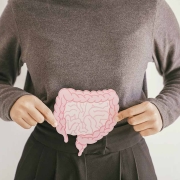Visceral Manipulation: What Is It & How Does It Work?
Within the foundation of osteopathy is the concept that freedom of movement within all structures of the body is the key to their healthy functioning and self-healing abilities. Life is movement, a result of our muscles, bones and organs moving together harmoniously. Visceral manipulation is one such manual technique that fully embraces this concept.
How it works
The viscera, or the internal organs located within the chest and abdomen, have an inherent motion and this motion is connected to the physiological functioning of the organs. Most people don’t realize that our organs are indeed in constant motion as we move. For example, our kidneys slide up and down our Psoas muscle, a major hip and trunk flexor. This is possible because our vertebrae create a frame which is supported by our muscles. Its job is to protect our organs that are enveloped by membranes and serous fluid and allow them to move freely in the cavities formed by the skeleton. When the viscera become restricted, the body is forced to compensate in various ways, leading to a functional problem. And if not remediated it could eventually lead to a structural problem. Getting back to the example of our kidneys, if its mobility is restricted, it can contribute to someone’s back pain.
But how does one lose this mobility in the first place? It can be the result of many factors such as surgeries, diet, posture, and physical trauma, to name a few. A small dysfunction in one area can lead to problems elsewhere in the body due to the interconnectedness of the fascial system. Therefore, the origin of pain can actually be in a different place. The body is essentially forced to develop a compensatory pattern until the source of the dysfunction is located and treated.
The goal of visceral manipulation is to restore homeostasis, or stability, within the affected organ(s). This, in turn, will also positively affect the lymphatic, circulatory and neurological systems that surround the organ being mobilized. Palpating, or using gentle touch, to locate tensions in the fascia (muscles) by a trained hand can reveal much about the organ’s function. This technique allows the practitioner the opportunity to affect deep change through a gentle approach.
Jean-Pierre Barral, a Physiotherapist (R.P.T.) and Osteopath (D.O.), is the developer of the Visceral Manipulation technique. He first developed this technique in France and started teaching it in the United States in 1985. His clinical work observing tissue tension patterns in cadavers along with knowledge of biomechanics lead to the development of Visceral Manipulation which is now used by many health practitioners as an important therapeutic tool.
We are here for you, and we want to help.
Our goal is to return you to optimal health as soon as possible. To schedule an appointment please call: 703-532-4892 x2









Leave a Reply
Want to join the discussion?Feel free to contribute!